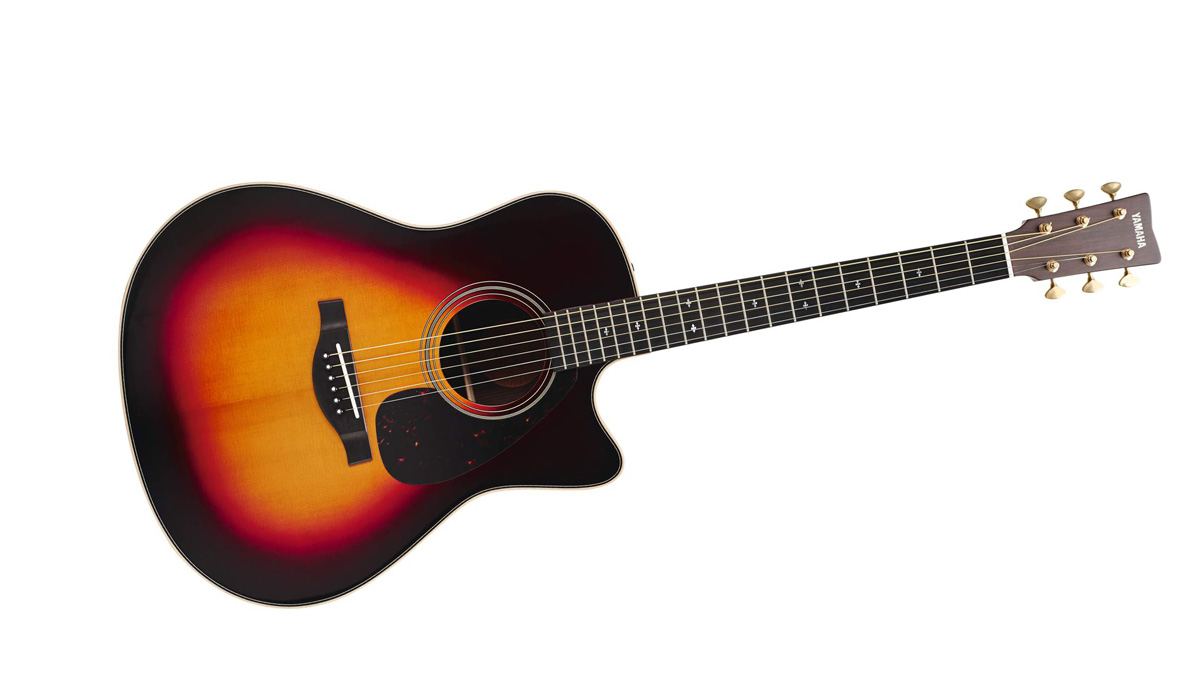MusicRadar Verdict
The LLX is probably the most well behaved and sweetly voiced dreadnought we’ve encountered in recent years.
Pros
- +
Surprisingly demure but eminently capable dreadnought with an excellent preamp/pickup system.
Cons
- -
The price puts it up against the bespoke builders.
MusicRadar's got your back
Yamaha has been turning out quality acoustics for many, many years, but still the company’s expertise in the area goes largely unsung.
Owners will attest to the calibre of workmanship, the sound and excellent playability to be found in its instruments, not to mention innovative pickup design and, more recently, its ARE heat treatment for soundboards. So, what exactly is the deal here? We took a model from the range in order to discover the current state of play - and were drawn in by the charms of Yamaha’s high-end work.
The LLX26C is a cutaway dreadnought, although Yamaha itself refers to it as an ‘original jumbo’. It also has a pickup fitted in the form of the excellent three-way ART system, which, in plain English, stands for ‘Acoustic Resonance Transducer’ that sees a series of three transducers under the soundboard, the outputs of which are mixed together in the onboard System 60 preamp. More on that in just a minute.
The LLX26C is hand-built in Japan, which explains immediately why this guitar is not anyway near cheap. But Yamaha takes pride in its hand-built range and rightly so, because the look of this guitar simply reeks of class and quality from the outset. The 26C follows the acknowledged route of the cutaway dreadnought virtually to the letter - and if this brown sunburst is not to your liking, then you’ll be pleased to hear that the guitar is also available in both black and the more conservative natural finishes.
The top wood here is an Engelmann spruce that benefits from Yamaha’s own in-house ARE heat treatment, with solid rosewood back and sides. The spec doesn’t say whether this is Indian rosewood or not, although you’d be hard pressed to tell the difference. The neck is Yamaha’s well-known five-ply sandwich of mahogany and rosewood for added strength and general durability. It looks very classy, too. Gold-coloured open back tuners add a little vintage chic into the picture and the ebony ’board completes the overall aesthetic nicely. Other accoutrements include bone for both nut and bridge saddle, maple and stained wood for the body binding, tortoiseshell pattern for the pickguard and a very subtle but stylish black/white rosette around the soundhole. In the hands, the neck profile, a generous but shallow C, fits the hand well and the 44mm (1.75-inch) nut width is decidedly fingerstyle-friendly.
Feel and sounds
Yamaha’s dreadnought delivers an immediate sonic surprise in that instead of the lower-mid heavy punch we were expecting, we find instead a demure, even and finely balanced voice. Of course, this could upset some traditionalists who are after the dreadnought’s distinctive take-no-prisoners sonic offensive, but after the initial surprise, we actually like it a lot.
It’s like someone has already taken off a sliver of midrange mud and added a slight compression to the sound. That’s not to say that the guitar lacks dynamics - far from it. You can dig in and bash out a belter if so desired, but there’s that additional edge of subtlety that’s unusual to find on a body shape like this. Think of it as an extra.
Want all the hottest music and gear news, reviews, deals, features and more, direct to your inbox? Sign up here.
The LLX handles chords like a pro - any style you want, from Poison to James Taylor (we tried both) - with nothing falling outside of its considerable range. Fingerstyle sits prettily with it, but tradition insists that dreadnoughts were built for chordal accompaniment when onstage microphone technology, such as it was, was the only way of getting heard. Fingerstyle wasn’t necessarily part of the plan - although Michael Hedges didn’t have any problems in this area with his D-28. But the LLX will step up and take a bow here without a problem.
As to the electric character of the LLX, Yamaha’s home-grown ART system guarantees that there’s no Jekyll and Hyde change in personality from acoustic to electric domains; you really do get more of the same - only louder. In the LLX’s case, this is decidedly a good thing. Its well-mannered voice needs to be heard and the three-way tone controls (push-push and cunningly concealed in the woodwork of the upper bout) make sure that you have maximum and effective control readily at hand. Furthermore, there’s a master volume to ensure that once your sound is set up, you can dial in more or less of it as required.
The LLX is probably the most well behaved and sweetly voiced dreadnought we’ve encountered in recent years. Meanwhile, build quality is beyond excellent, the only dark cloud on the horizon is the price. This guitar is in the range where custom builds are beginning to become a valid option and the mainstream high-end market is replete with guitars that fall into the £3k to £4k range, too. So hard choices and much research would have to be made accordingly, because the price tags here represent an investment that only professional and dedicated semi-pro players might make.
Still, as we’ve said, Yamaha has an outstanding reputation for quality that has existed for many decades and, as such, you would do well to include this instrument on any shortlist you might be making before taking the plunge.
- More of the best Yamaha acoustic guitars
